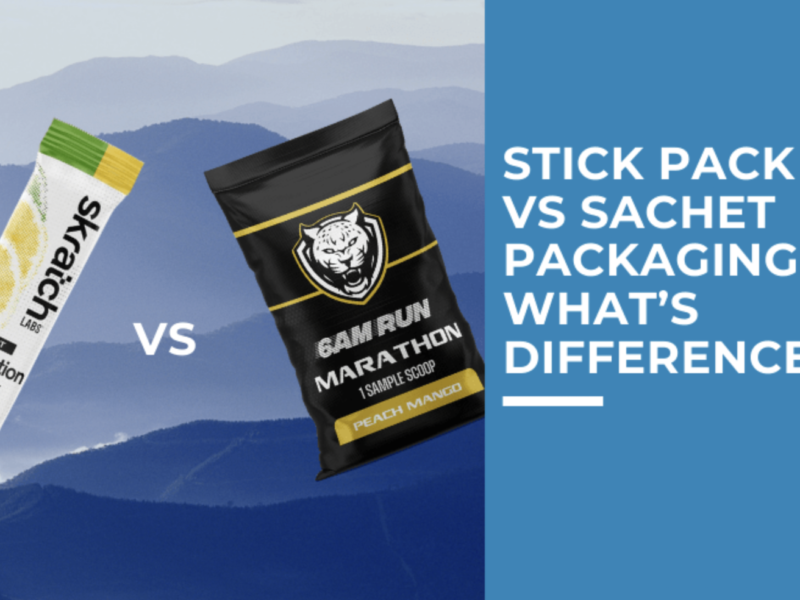Both stick pack and sachet packaging are excellent forms of protection for your products. Because they employ state-of-the-art packaging technology, they show your customers that you value the integrity of your product. This translates to consumers feeling respected, as well as getting a fresh product. This equals success for your brand. There are similarities and differences when it comes to these two styles of packaging.
Pros and Cons of Stick Pack Packaging
Stick pack pouches are a type of flexible packaging characterized by their small size and narrow shape. They are long and slender and they have a seam running down the side of the package. Stick pack packaging is usually about four times longer than its width and only a few inches long. This makes them handy for travel or for storing in a desk drawer at work or a cabinet at home.
When it comes to production, cost and efficiency should both become more manageable when employing stick pack packaging. However, it might be a big expenditure to transfer manufacturing to stick pack materials and technique, which some might view as a con.
Pros and Cons of Sachet Packaging
While custom printed stand up pouches can help your product stand out on the shelves, sachet packaging provides many benefits. The moisture-proof barriers prevent extreme temperatures, oxygen and moisture penetration or exclusion from causing damage to the product.
The zippers are child-proof and resealable, which can be the difference between a child or animal getting into something that they shouldn’t. That said, sachet packets have an easy-tear capability that makes them easy to initially open.
Though sachet packets are recyclable, as yet, there is little interest shown in actually carrying out the recycling process. This leads to sachet packets being left as litter, clogging waterways and harming wildlife. Brands would be wise to celebrate that the packaging is recyclable, that consumers and communities might show more interest in recycling them.
Choosing Stick Pack vs. Sachet Packaging
Both types of packaging are perfect for giving out product samples. Both are small and sleek and, despite their small size, can provide a great canvas for your brand information. Traditionally, stick packs are used for dry powders, though can also be used for liquids, gels and semi-solids. Coffee grounds or energy drink supplements are examples of products best served with stick pack packaging, as are sugar and spices.
Single-use sachet packaging is typically used for neutraceutical products and is perfect for gel caps, tablets, pills, gummies or other capsule products. Sachets can be designed for an exact usage amount.
At the end of the day, stick packs are great for tea and coffee flavorings and other powders like cajun spices or salt. They provide a beautiful slender, sleek look and feel. Sachets are perfect for anything that you want to be distributed in a single, pre-measured dose. They’re great for people on-the-go, who are looking for a last-minute or emergency purchase to replace forgotten supplements.
When it comes to packaging, both stick pack and sachet are first-rate choices, capable of protecting many types of products. They reduce cost and waste in the manufacturing process and provide consumers with a level of satisfaction that has become the standard. Visit a flexible packaging website to see the latest in packaging choices today.
